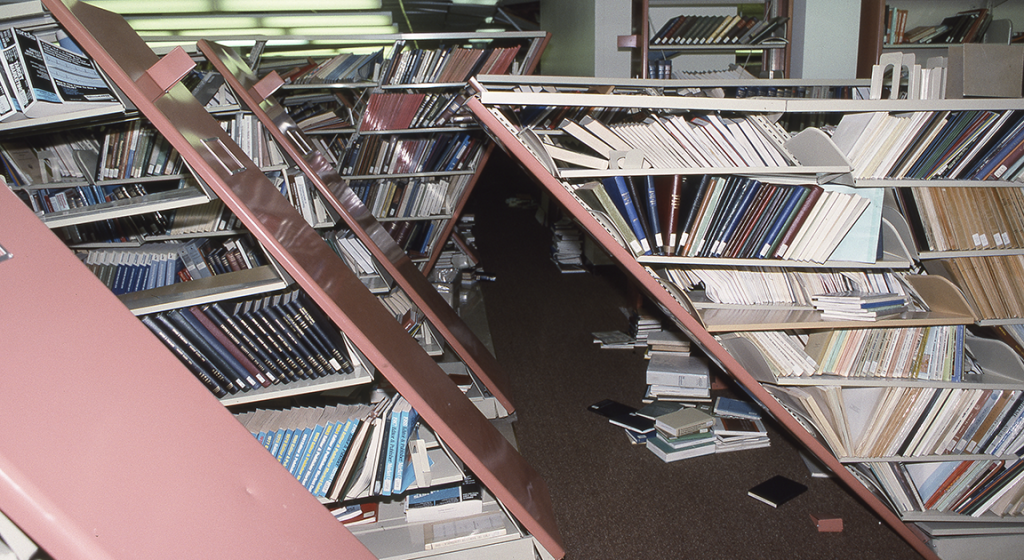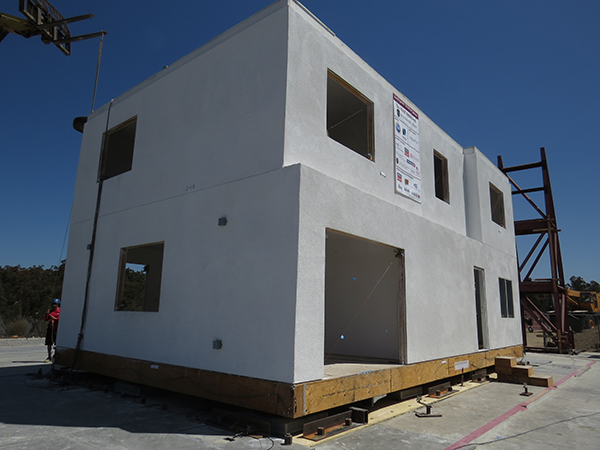Every conversation on campus in the late fall of 1989 began with, “Where were you when … ?” There was no need to finish the question. The 6.9 magnitude Loma Prieta earthquake that hit the greater Bay Area at 5:04 p.m. on Oct. 17 stunned the Stanford community and shaped the memories and experiences of thousands of students, faculty and staff.

The university responded quickly – sheltering students that first night in Burnham Pavilion and resettling those displaced from structurally unsafe residences. Memorial Church and the Stanford Art Museum – now the Cantor Arts Center – sustained major damage. At the time, both were closed “indefinitely.” More than 750,000 books littered the floors of libraries across campus, and the west wing of Green Library, built in 1919, faced potential long-term closure.
Loma Prieta precipitated a period in Stanford history marked by investment of nearly $160 million to restore more than 200 campus buildings. It also galvanized the academic community. A quarter-century later, Stanford engineers and scientists are working at the cutting edge of seismology research in areas as diverse as understanding the forces that trigger earthquakes and designing buildings to withstand those forces.

For Loma Prieta’s 25th anniversary, Stanford Report created a multimedia feature on the earthquake’s legacy. From arresting images of campus damage to earthquake research at Stanford today, the feature tells the story and shows the long-term impact of a significant event in the university’s history.
Learn more about the day that changed Stanford.
